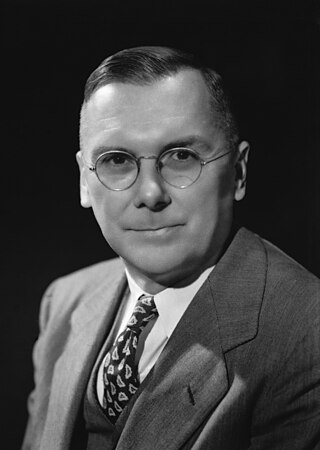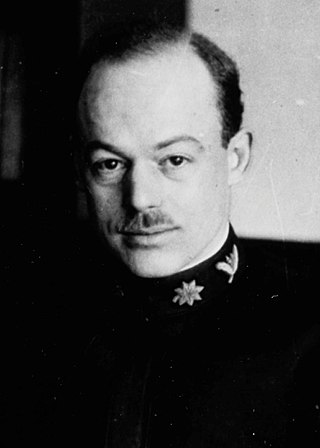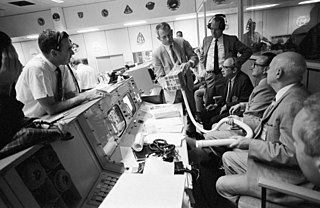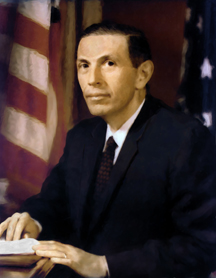This article needs additional citations for verification .(December 2022) |
ESDU (originally an acronym of "Engineering Sciences Data Unit" but now used on its own account) is an engineering advisory organisation based in the United Kingdom.
This article needs additional citations for verification .(December 2022) |
ESDU (originally an acronym of "Engineering Sciences Data Unit" but now used on its own account) is an engineering advisory organisation based in the United Kingdom.
ESDU provides validated engineering analysis tools to engineers and teachers in the aerospace engineering, process engineering and structural engineering fields. The tools include methodologies, design guides, equations and software, and are accompanied by an advisory service that enables engineers to discuss their requirements and data application directly with ESDU staff.[ citation needed ]
ESDU's engineering staff are assisted and guided in their work by independent committees of specialists drawn from industry and academia worldwide. They are responsible for ensuring the technical quality of the work and for presenting the data in a clear, concise, authoritative manner. They also determine the future direction of the work, taking into account the views of users.[ citation needed ]
The services offered by ESDU cover a wide variety of different engineering fields. These include:[ citation needed ]
In 1940 with World War II raging the British aircraft industry was rapidly expanding. Engineers from other industries as diverse as bicycle manufacture and piano making who lacked the specialised knowledge required for aircraft design were being drafted into the war effort to assist with the design and construction of aircraft.
To meet this challenge, the government asked the Royal Aeronautical Society to form a Technical Department with the aim of producing easy-to-use design guides, data sheets and analysis methodologies. More importantly the Technical Department was to validate this work to ensure its accuracy. To ensure the authority and quality of the work, a Technical Committee was established, with its expert members drawn from across the many aircraft companies and research establishments. In short, ESDU were tasked with bridging the gap between research and industry. This unique philosophy of collaboration allowed the team to assemble a large collection of validated design guides and data sheets for use by the aircraft industry.
Towards the end of the 1960s, grant aid was withdrawn and ESDU became a commercial entity selling subscriptions to its services. In 1998 ESDU was purchased by IHS Inc. based in Denver, United States, which, in turn became part of S&P Global. In 2023 S&P Global spun off [1] its Engineering Solutions division, which includes ESDU, as a newly formed company called Accuris.

Mechanical engineering is the study of physical machines that may involve force and movement. It is an engineering branch that combines engineering physics and mathematics principles with materials science, to design, analyze, manufacture, and maintain mechanical systems. It is one of the oldest and broadest of the engineering branches.

Aerospace is a term used to collectively refer to the atmosphere and outer space. Aerospace activity is very diverse, with a multitude of commercial, industrial, and military applications. Aerospace engineering consists of aeronautics and astronautics. Aerospace organizations research, design, manufacture, operate, maintain, and repair both aircraft and spacecraft.
Structural engineers analyze, design, plan, and research structural components and structural systems to achieve design goals and ensure the safety and comfort of users or occupants. Their work takes account mainly of safety, technical, economic, and environmental concerns, but they may also consider aesthetic and social factors.

Richard Travis Whitcomb was an American aeronautical engineer who was noted for his contributions to the science of aerodynamics.
The von Karman Institute for Fluid Dynamics (VKI) is a non-profit educational and scientific organization which specializes in three specific fields: aeronautics and aerospace, environment and applied fluid dynamics, turbomachinery and propulsion. Founded in 1956, it is located in Sint-Genesius-Rode, Belgium.

The German Aerospace Center is the national center for aerospace, energy and transportation research of Germany, founded in 1969. It is headquartered in Cologne with 35 locations throughout Germany. The DLR is engaged in a wide range of research and development projects in national and international partnerships.
In software project management, software testing, and software engineering, verification and validation is the process of checking that a software engineer system meets specifications and requirements so that it fulfills its intended purpose. It may also be referred to as software quality control. It is normally the responsibility of software testers as part of the software development lifecycle. In simple terms, software verification is: "Assuming we should build X, does our software achieve its goals without any bugs or gaps?" On the other hand, software validation is: "Was X what we should have built? Does X meet the high-level requirements?"
Reliability engineering is a sub-discipline of systems engineering that emphasizes the ability of equipment to function without failure. Reliability is defined as the probability that a product, system, or service will perform its intended function adequately for a specified period of time, OR will operate in a defined environment without failure. Reliability is closely related to availability, which is typically described as the ability of a component or system to function at a specified moment or interval of time.

Hugh Latimer Dryden was an American aeronautical scientist and civil servant. He served as NASA Deputy Administrator from August 19, 1958, until his death.

Jerome Clarke Hunsaker was an American naval officer and aeronautical engineer, born in Creston, Iowa, and educated at the U.S. Naval Academy and the Massachusetts Institute of Technology. His work with Gustav Eiffel outside Paris led to the first wind tunnel in the US at MIT. He was instrumental in developing a weather reporting and airway navigation. Hunsaker was also pivotal in establishing the theoretical and scientific study of aerodynamics in the United States. And he was primarily responsible for the design and construction of the Navy-Curtiss airplane (NC-4) that accomplished the first transatlantic flight, and the first successful shipboard fighter. Later he championed lighter-than-air flight but the loss of the Navy airship he designed, the USS Akron, led to the withdrawal of federal support. His WW2 chairmanship of the National Advisory Committee for Aeronautics (NACA) was notable for favouring the development of existing aircraft designs rather than experimenting with turbojets or missile technology.

The École nationale supérieure d'ingénieurs de constructions aéronautiques, meaning National Higher School of aeronautical constructions, was a French engineering school founded in 1945. It was located in Toulouse. In 2007, Ensica merged with Supaéro to form the Institut supérieur de l'aéronautique et de l'espace (ISAE).

Adolf Busemann was a German aerospace engineer and influential Nazi-era pioneer in aerodynamics, specialising in supersonic airflows. He introduced the concept of swept wings and, after emigrating in 1947 to the United States under Operation Paperclip, invented the shockwave-free supersonic Busemann biplane.

Manufacturing engineering or production engineering is a branch of professional engineering that shares many common concepts and ideas with other fields of engineering such as mechanical, chemical, electrical, and industrial engineering. Manufacturing engineering requires the ability to plan the practices of manufacturing; to research and to develop tools, processes, machines, and equipment; and to integrate the facilities and systems for producing quality products with the optimum expenditure of capital.

Aerospace engineering is the primary field of engineering concerned with the development of aircraft and spacecraft. It has two major and overlapping branches: aeronautical engineering and astronautical engineering. Avionics engineering is similar, but deals with the electronics side of aerospace engineering.
Boris Laschka is a German fluid dynamics scientist and aeronautical engineer known for his work in unsteady aerodynamics, in applied aerodynamics, in aeroelasticity, and by his participation in the development of several experimental, civil, and military airplanes, e.g. VTOL VJ 101, Airbus A300 and A310, CN 235 and N 250 (Indonesia) and Tornado aircraft.

Alexander Henry Flax was the Chief Scientist of the U.S. Air Force (USAF) from 1959 to 1961, Assistant Secretary of the Air Force for Research and Development from 1963 to 1969, and the third Director of the National Reconnaissance Office (NRO) from 1965 to 1969. He was the director at a time when the second generation of imaging systems became operational and began to play a major role in United States intelligence during the Cold War. He oversaw major growth in NRO funding and personnel, the development of signals intelligence collectors from space, and the development of electro-optical imaging for US reconnaissance satellites.

The aircraft design process is a loosely defined method used to balance many competing and demanding requirements to produce an aircraft that is strong, lightweight, economical and can carry an adequate payload while being sufficiently reliable to safely fly for the design life of the aircraft. Similar to, but more exacting than, the usual engineering design process, the technique is highly iterative, involving high-level configuration tradeoffs, a mixture of analysis and testing and the detailed examination of the adequacy of every part of the structure. For some types of aircraft, the design process is regulated by civil airworthiness authorities.

Bhagavatula Dattaguru is an Indian engineer and academic. He has received several awards, including the Padma Shri Award, India's fourth highest civilian honour in 2005 in the field of science and engineering.
Tumkur Seetharamaiah Prahlad is an Indian aerospace scientist and the former director of the National Aerospace Laboratories (NAL), Bengaluru, known as a specialist in Aerodynamics and Aerospace Design. His contributions are reported in Indian civil aircraft development programmes of Hansa and NAL Saras and light combat aircraft development programme. The Government of India awarded him the civilian honour of the Padma Shri in 2004, The same year, he received the H. K. Firodia Award from H. K. Firodia Memorial Foundation.

Frances Beatrice Bradfield was an aeronautical engineer at the Royal Aircraft Establishment (RAE). She worked at RAE Farnborough, where she headed the Wind Tunnels Section. Here she mentored many of the younger male engineers who joined the RAE.